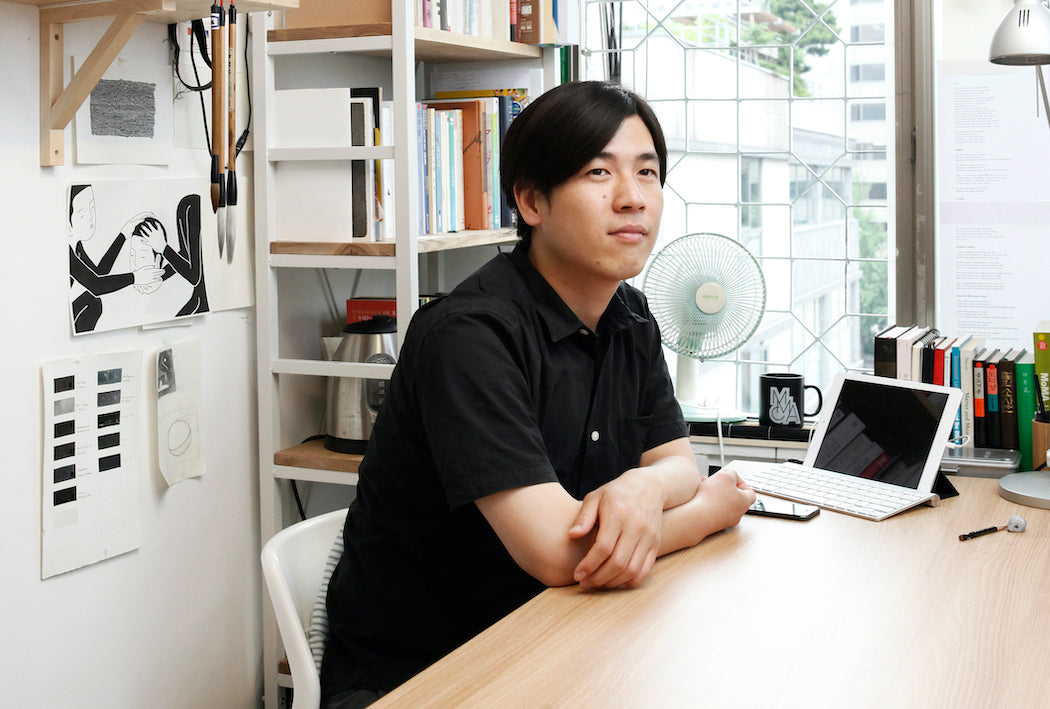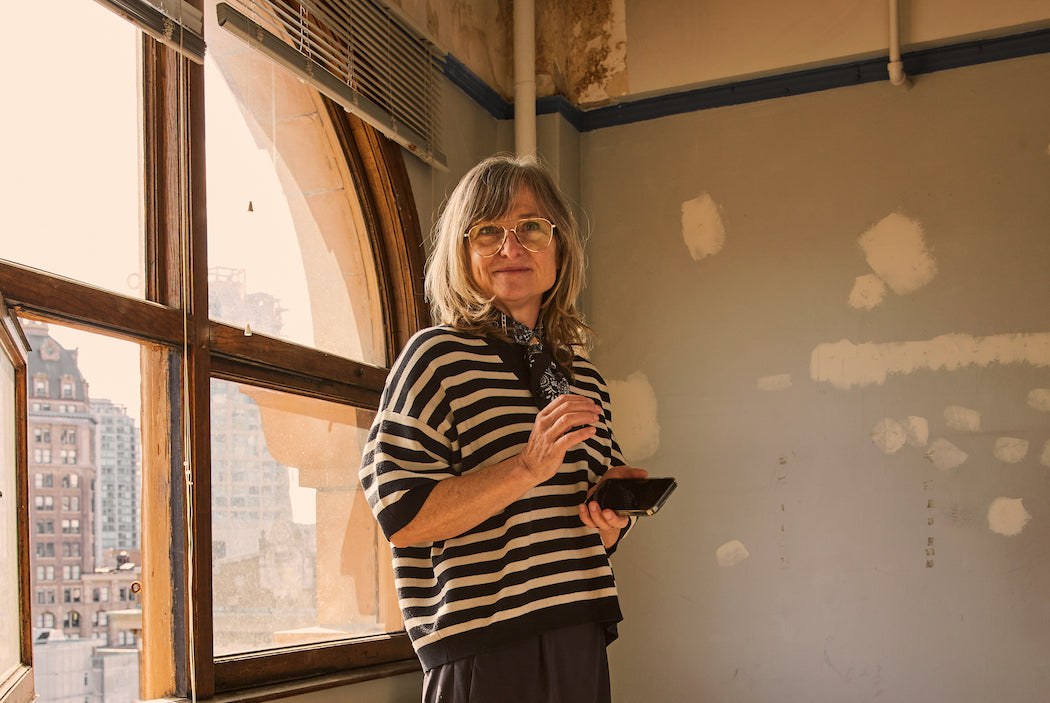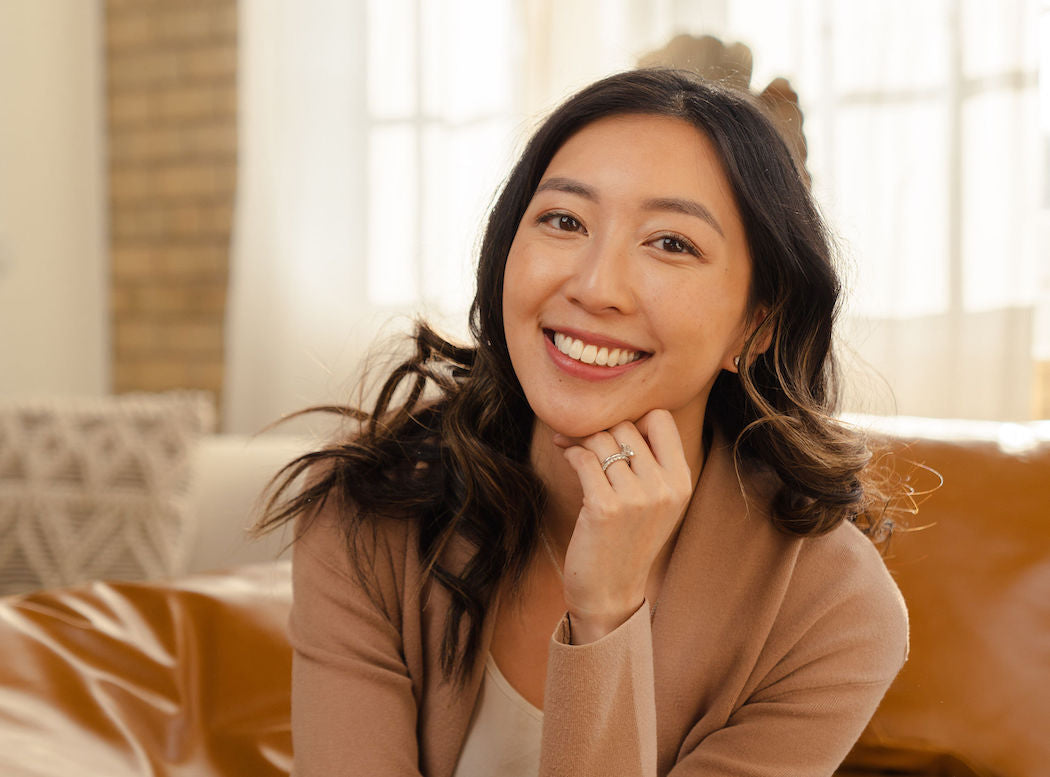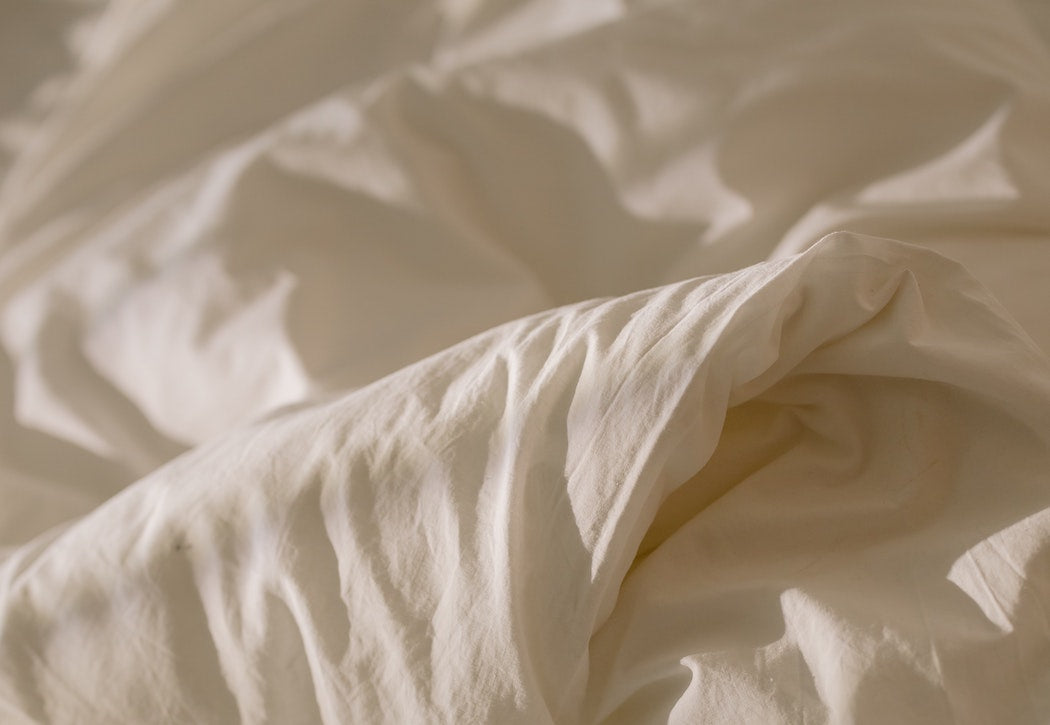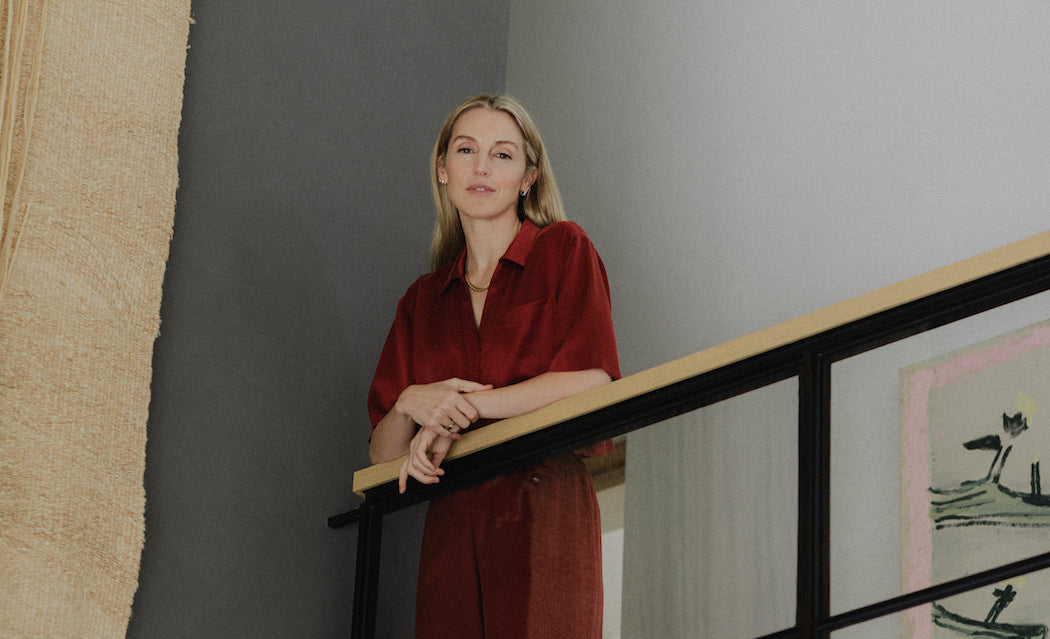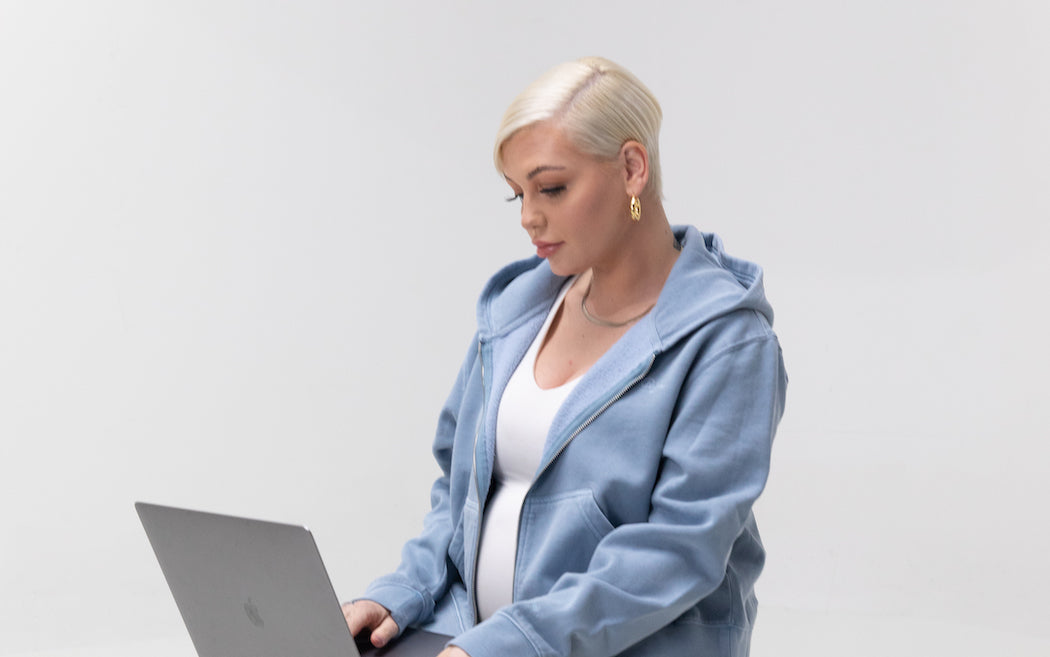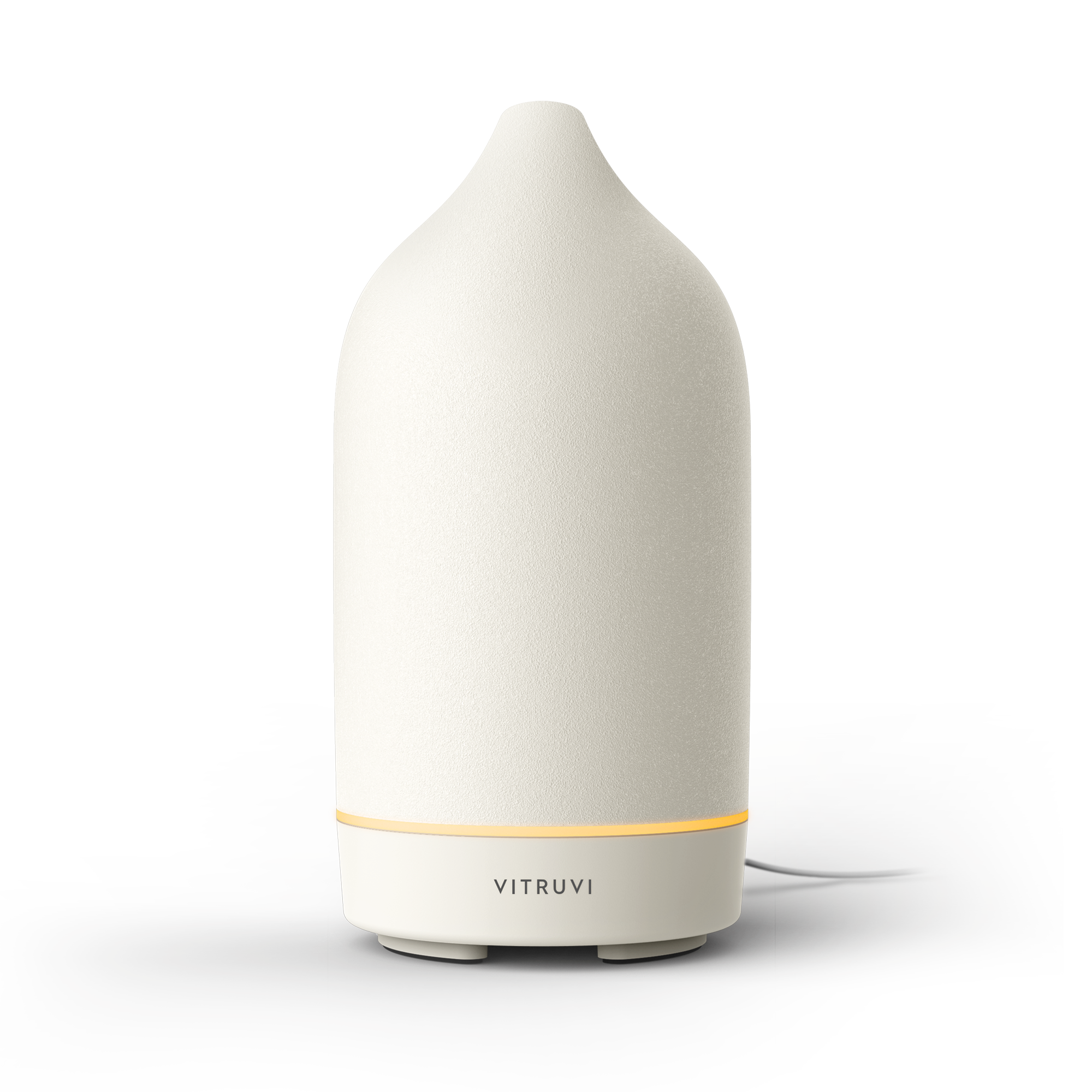What to make of our isolation?
Two pieces created in 2020 by Moonassi—the pseudonym of Seoul-based artist Daehyun Kim—consider this question.
Paired as a diptych, Self-Awareness I pictures Moonassi’s signature ambiguous figure looking into a shallow bowl to find their own face, rising up like a mask staring back. In its accompaniment work, Self-Awareness II, the same character is confined in a box, penetrating one wall by reaching a hand through it; simultaneously, that same hand appears from above as if from another dimension. Partnered like siblings, yet unable to reach one another, the characters in these works are aware of only themselves.

Genderless and devoid of cultural signifiers, the characters are representative of both ourselves and each other. Kim—who has exhibited extensively internationally, has illustrated for The New York Times and Vogue Korea, and has collaborated with the likes of Maison Kitsuné and WeWork—has been exploring these paradoxically void and omniscient figures throughout his career.
“The characters also don’t have an expression on their face,” Kim explains via email (the medium in which he is most comfortable communicating in English). “They don’t wear a costume that could remind viewers of a particular social identity, either. I want to give viewers more space for empathy, and I hope audiences can see this in the drawings without bias.” Kim’s work goes beyond seeing others; it’s difficult to look at these images and see firstly anything other than a reflection. As the character in Self-Awareness II reaches out—perhaps in search of someone else, to only return to themselves—it’s impossible to not think of the time we find ourselves in today: disconnected from our communities, reaching for solace within.
This state, however, was considered by Kim long before the coronavirus pandemic. “Being in isolation isn’t that unusual of a situation as an artist,” he reflects. “I find it to be similar to the time I spend alone with a blank piece of paper to find the best image.” With a Bachelor of Fine Arts in Oriental Painting from Hongik University in Seoul, Kim often contemplates themes of emptiness—related to his study of East Asian aesthetic philosophies—through his work. “I don’t know why I’m obsessed with the subject so much,” he says. “The emptiness—it’s a state of mind that I don’t want to be in, but at the same time, it’s a level of mind that I always want to reach.”
Kim’s illustrated New York Times essay, titled “The Anxiety of Isolation” and published in May 2020, traces that search for clarity. In it, he outlines some of his preoccupations during the first months of the pandemic—how sometimes worrying about the virus can be pleasurable, how memories can be painful, how the future can be scary. But Kim also describes finding a partner: the small boy who lives inside himself. And this boy only has simple needs—good food, fresh air, and sleep.

While Kim’s work is often filled with surreal imagery, it’s this quiet reality that seems to always be at the forefront. Even as a figure’s arm is disconnected from its body, reaching into some unknown dimension, Kim cannot be classified as an irreverent absurdist. “I think we are living in alternative realities, such as Instagram, Youtube, or Netflix,” he says. “It’s good to be fed unlimited things to watch to help forget all of our troubles, but the problem is it’s getting more difficult to stop living in a fantasy.”
These places of escapism function as our new dreamscapes, sometimes replacing our interior worlds. “We used to be able to stop watching a movie and go back to real life as soon as the VCR stop button was pushed, but now it’s almost impossible to stop enjoying something,” he admits. Filling the emptiness ignores the basic truth that Kim’s work exposes: that down deep, at the bottom of this pit, is a longing for connection.
The creation of art allows Kim to locate this part of himself, to connect to the pulse of life. His search for that which connects us all is, in turn, what allows him to connect to himself. “The process of drawing, such as touching paper with a brush repeatedly, brings me peace. I’m motivated to make new pieces because I want to be in the same state of mind,” he reflects. “This state where you’re not alone in the feeling of anxiety or loneliness—like you don’t need anything else but to keep doing it.”
This place where we find ourselves—through art, cooking, eating, birdwatching, running, meditating, sitting, standing, ustrasana—this is the place where we can all meet. To make something out of the emptiness.
